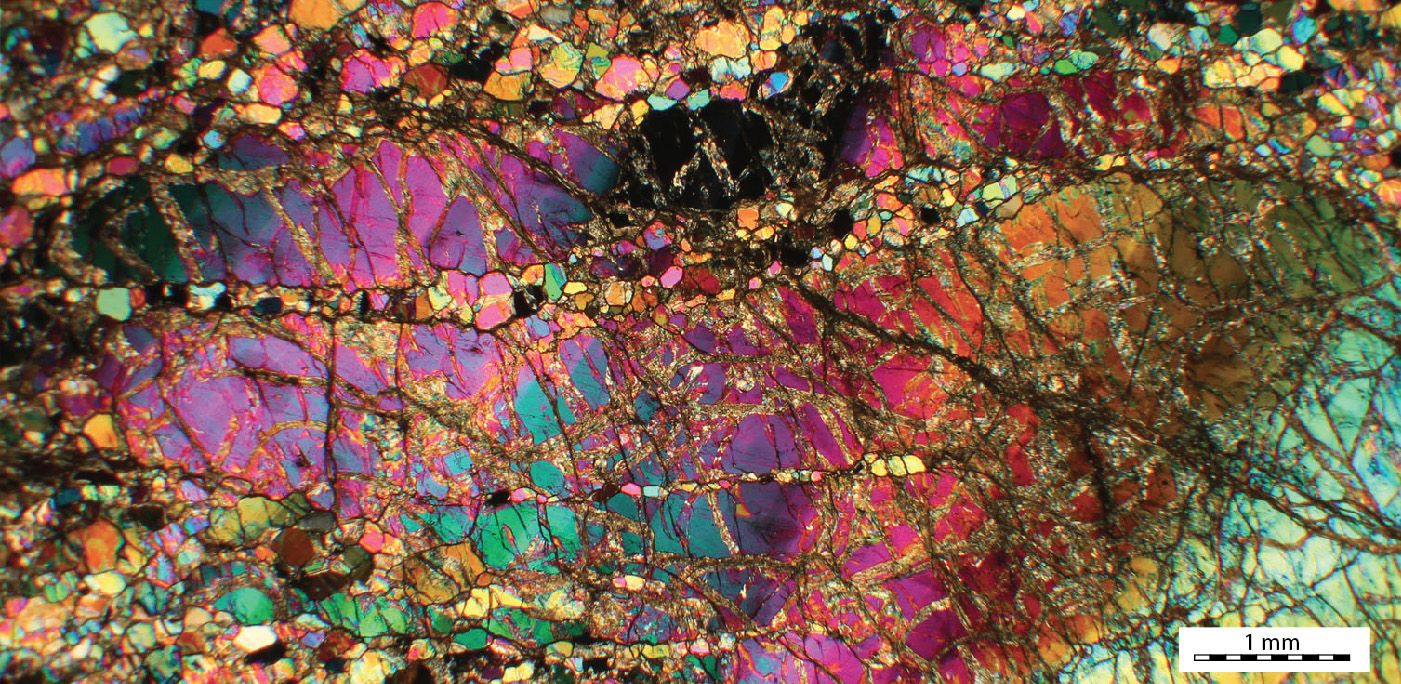I’m excited about some xenoliths I’ve been looking at from beneath the Alpine Fault… come to my AGU talk to hear more:
A few spinel peridotite xenoliths found near the Alpine Fault, New Zealand, exhibit a mylonitic texture and, locally, an extremely fine ~30 micron grain size. The harzburgite xenoliths were emplaced in a ~200 km-long elongate dike zone interpreted as a gigantic tension fracture or Reidel shear associated with Alpine Fault initiation ~25 Ma. The presence of thin (~1 mm) ultramylonite zones with px-ol phase mixing and fine grain sizes, minimal crustal-scale strain associated with the dike swarm, and the absence of mylonites at four of the five xenolith localities associated with the dike swarm indicate that upper mantle deformation was highly localized.
Strings of small, recrystallized grains (planes in 3D) are found in the interiors of olivine porphyroclasts. In some cases, bands 1-2 grains thick are traced from the edges of olivine grains and terminate in their interiors. Thicker zones of recrystallized grains are also observed crossing olivine porphyroclasts without apparent offset of the unrecrystallized remnants of the porphyroclasts. We suggest a brittle-plastic origin for these features since the traditional recrystallization mechanisms associated with dislocation creep require much more strain than occurred within these porphyroclasts. Analogous microstructures in quartz and feldspar in mid-crust deformation zones are attributed to brittle-plastic processes.
We hypothesize that such fine-grained zones were the precursors of the observed, higher-strain ultramylonite zones. Given the size of the new grains preserved in the porphyroclasts (~100 micron) and a moho temperature >~650°C, grain growth calculations indicate that the observed brittle-plastic deformation occurred <10,000 yrs. prior to eruption. It is likely then that either brittle-plastic deformation was coeval with the ductile shearing occurring in the ultramylonite bands, or possibly, if deformation can be separated into brittle-plastic (early) and ductile (later) phases, that the entire localization process was very rapid (<10,000 yrs). In either case we interpret that semi-brittle deformation was a key process responsible for rapid localization in this initiating plate-scale mantle shear zone.
